#john crome
Text

An Egyptian Poppy and a Water Mole painted by John Crome (1768 - 1821)
254 notes
·
View notes
Text

Moonlight on the Yare by John Crome
6 notes
·
View notes
Photo
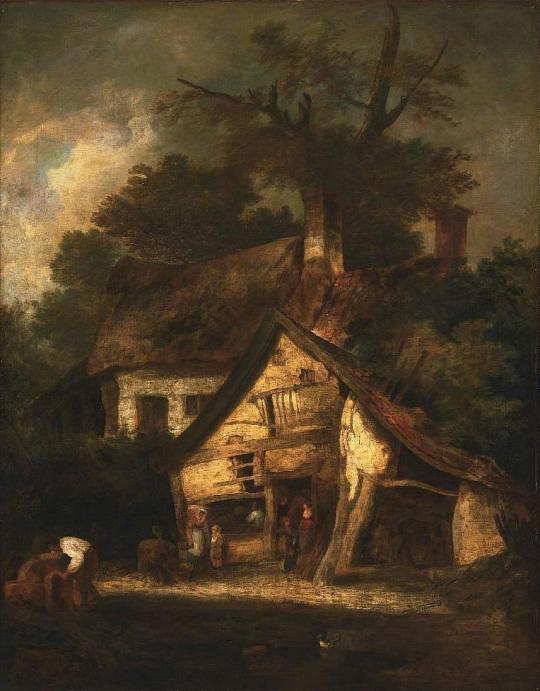
MWW Artwork of the Day (12/29/22)
John Crome (British, 1768-1821)
Blacksmith's Shop near Hingham, Norfolk (c. 1808)
Oil on canvas, 154 x 121.9 cm.
The Philadelphia Museum of Art (John Howard McFadden Collection)
Crome’s early masterpiece "The Blacksmith's Shop near Hingham" shows the tumbledown shack thrown up against the side of a thatched cottage used by the blacksmith for the villages of Hingham and Hardingham, each about twelve miles southwest of Norwich. To the left, the smithy sharpens a tool at a grindstone; family members and perhaps assistants mill around the shop. The dense, full foliage of the trees, and the blue, silver-clouded sky indicate a scene in midsummer; the whole breathes an air of intense stillness on a warm afternoon in the deep country. In the foreground two ducks float on a pond. Crome used the motif of the shop in picturesque dilapidation set against a verdant landscape to create one whole and harmonious melding of shapes, tones, and textures.
For more of this artist's work, see this MWW gallery/album:
https://www.facebook.com/media/set/?set=a.2373166989455323&type=3
4 notes
·
View notes
Text

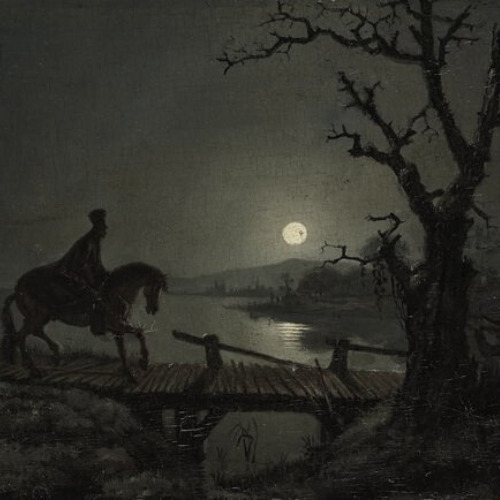
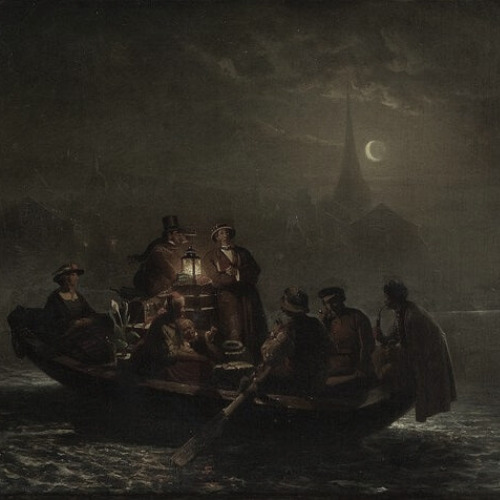




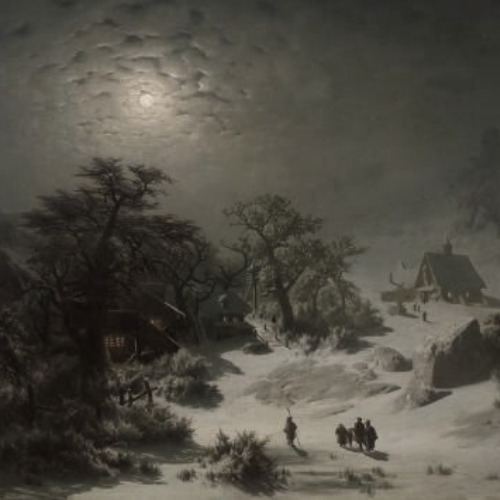





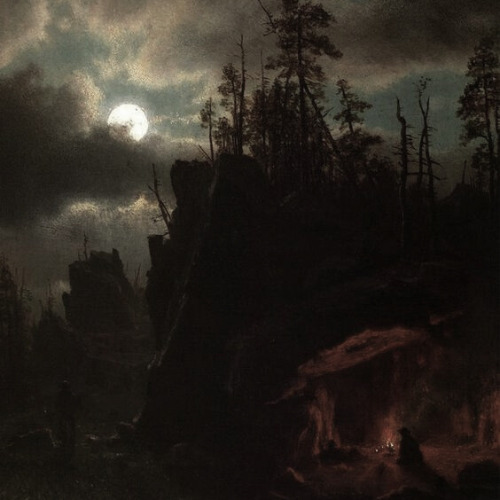




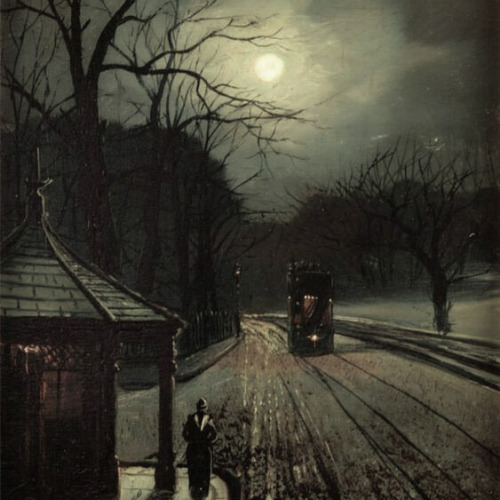
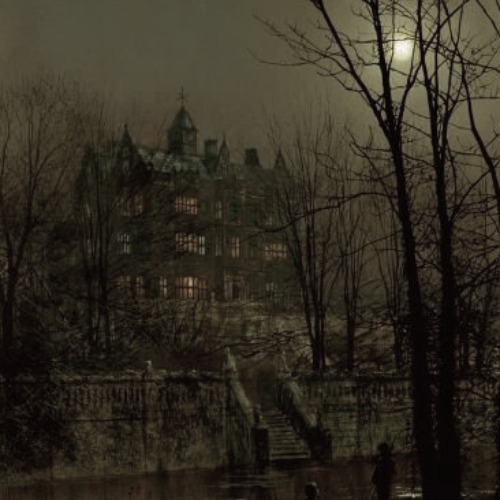
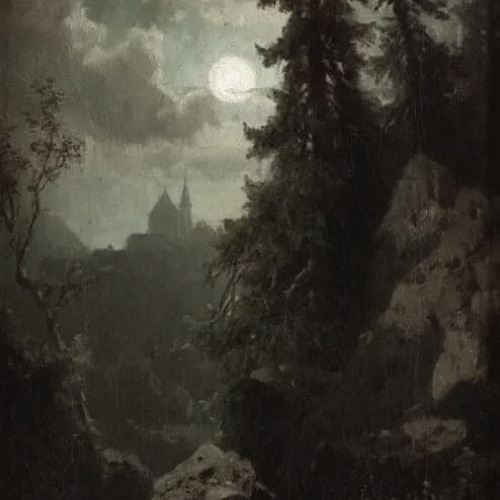
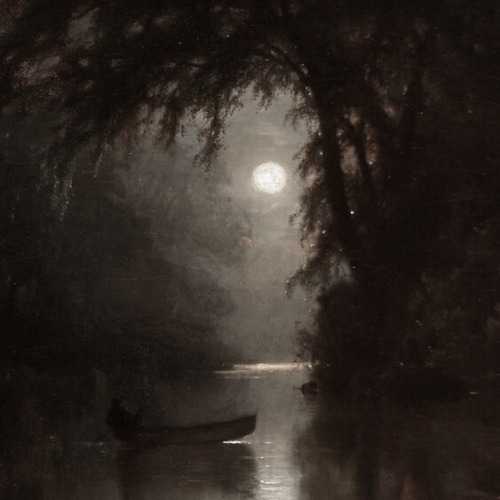
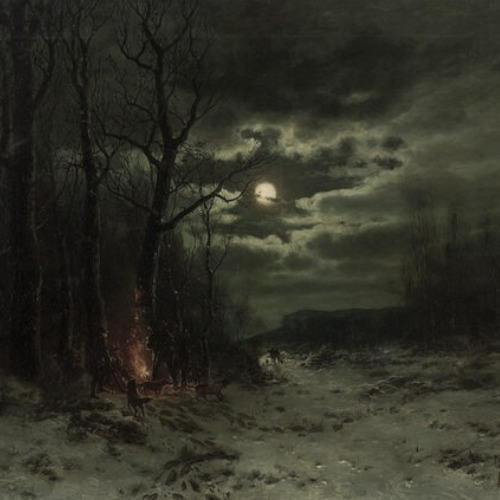

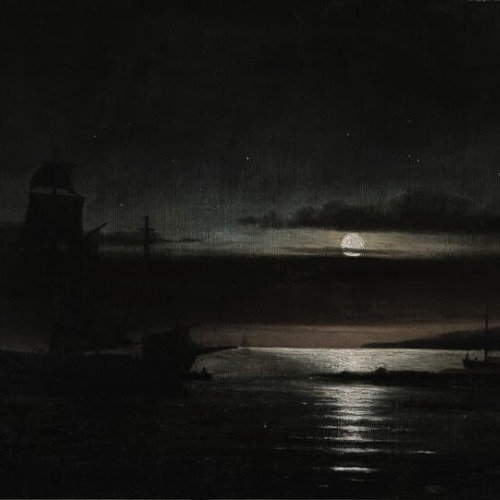




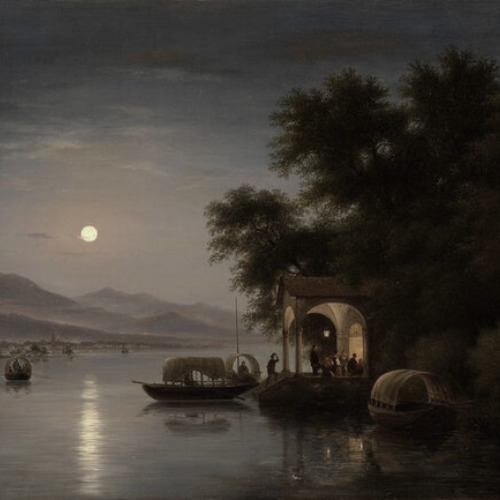
under the moonlight
#artist is justyna kopania#artist is carl friedrich hampe#artist is louis toussaint#artist is johan mengels culverhouse#artist is caspar david friedrich#cant find artist#artist is johannes rosierse#artist is adolf kosarek#artist is joseph wright#artist is sebastian pether#-cant find artist#artist is ivan aivazovsky#artist is lev feliksovic lagorio#artist is albert bierstadt#artist is heinrich gogarten#-artist is sebastian pether#artist is carl gustav carus#artist is karl heilmayer#artist is wilfred bosworth jenkins#artist is john atkinson grimshaw-#artist is adolf chwala#artist is arthur parton#artist is anders andersen-lundby#artist is knud baade#artist is f.m.e#-artist is f.m.e#artist is john berney crome#artist is joseph mallord william turner#artist is christian ernst bernhard morgenstern#artist is giuseppe canella
684 notes
·
View notes
Photo


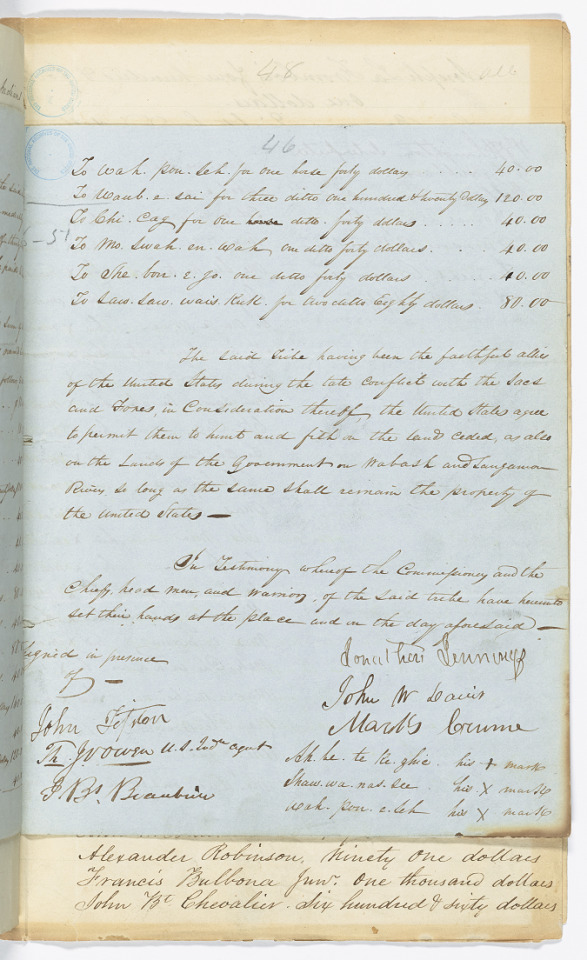

Treaty Between the United States and the Potawatomi Indians of the Prairie and Kankakee Signed at Camp Tippecanoe, Indiana, [p. 1, 2, 5] 10/20/1832.
Map of land ceded via the IDA Treaties Explorer.
File Unit: Ratified Indian Treaty 172: Potawatomi of the Prairie and Kankakee - Camp Tippecanoe, Indiana, October 20, 1832, 1789 - 1869
Series: Indian Treaties, 1789 - 1869
Record Group 11: General Records of the United States Government, 1778 - 2006
Image description: Map showing Cession 177. The land highlighted is a sizable chunk of Illinois, south of Chicago.
Transcription:
[crossed out] 27 [/] [underlined] 7 [/] 44
[in margin] Peaco [/]
Articles of a Treaty made and concluded at Camp
Tippecanoe, in the State of Indiana this 20th day of
October in the year of our Lord one thousand Eight
hundred and thirty two between Jonathan Jennings
John W. Davis and Marks Crome Commissioners on the
[blue circular stamp] THE NATIONAL ARCHIVES OF THE UNITED STATES [/blue circular stamp]
part of the United States of the one part and the Chiefs
and head men of the Potawatamie Tribe of Indians of
the Prairie and Kankakee of the other part,
Article 1st The said Potawatamie Tribe of Indians cede to the
United States the tract of land included within the following
boundary viz-
Beginning at a point on Lake Michigan ten miles
Southward of the mouth of Chicago River, thence in a
direct line to a point on the Kankakee River ten miles
above its mouth thence with said river and the Illinois
River to the mouth of Fox River, being the boundary of
a Cession made by them in 1816, thence with the Southern
boundary of the Indian Territory to the State line between
Illinois and Indiana thence North with said line to
Lake Michigan, thence with the Shore of Lake Mi-
=chigan to the place of beginning.
Article 2d From the Cession aforesaid the following tracts shall
be reserved, to wit-
Five sections for Shaw waw nas see, to include Little
Rock village-
#172
[page 2]
For Min-e-maung, one section, to include his village.
For Joseph Laughton, son of Wais-ke-shaw, one section, and
For Ce-na-ge-wine, one section both to be located at Twelve Mile
Grove, or Na-be-na-qui-nong.
For Claude Laframboise, one section, on Thorn creek.
For Maw-te-no, daughter of Francois Burbonnois, Jun'r. one
section, at Soldier's village.
For Catish, wife of Francis Burbonnois, Sen'r. one Section at
Soldier's village.
For the children of Wais-ke-shaw, two sections, to include the
small grove of timber on the river above Rock village.
For Jean B. Chevallier, one section, near Rock village, and
for his two sisters, Angelique and Josette, one half section each
joining his.
For Me-she-ke-ten-o, two sections, to include his village.
For Francis Le Via, one section, joining Me-she-ke-ten-o.
For the five daughters of Mo-nee by her last husband Joseph
Bailey two sections -
For Me-saw-ke-qua and her children, two section, at Wais-us-
kucks's village.
For Sho-bon-ier, two sections, at his village.
For Josette Beaubien and her children, two sections, to be located
on Hickory creek.
For Therese, wife of Joseph Laframboise, one section and
for Archange Pettier, one section, both at Skunk grove
[page 3]
[blue circular stamp] THE NATIONAL ARCHIVES OF THE UNITED STATES [/blue circular stamp] 46
To Wah-pou-seh, for one horse, forty dollars. 40.00
To Waub-e-sai, for three ditto, one hundred and twenty dollars. 120.00
To Chi-cag, for one ditto, forty dollars. 40.00
[in margin] 6-51 [/]
To Mo-swah-en-wah, one ditto, forty dollars. 40.00
To She-bon-e-go, one ditto, forty dollars. 40.00
To Saw-saw-wais-kuk, for two ditto, eighty dollars. 80.00
The said tribe having been the faithful allies
of the United States during the late conflict with the Sacs
and Foxes, in consideration thereof, the United States agree
to permit them to hunt and fish on the lands ceded, as also
on the lands of the Government on Wabash and Sangamon
rivers, so long as the same shall remain the property of
the United States -
In Testimony whereof the Commissioners and the
Chifs, head men, and warriors, of the said tribe have hereunto
set their hands at the place and in the day aforesaid -
[right column]
[signed] Jonathan Jennings
[signed]John W. Davis
[signed]Marks Crume
Ah-he-te-ke-zhie his x mark
Shaw-wa-nas-see his x mark
Wah-pon-e-seh his x mark
[left column]
Signed in presence
of-
[signed] John Tipton
[signed] Th. Jo. Owen, United States Indn agent
[signed] J. B. Beaubien
#archivesgov#October 20#1832#1800s#Native American history#American Indian history#Indigenous American history#treaties#Potawatomi#Illinois#land
29 notes
·
View notes
Text

Thatched Cottage in a Pastoral Landscape by John Crome
28 notes
·
View notes
Text
Finding out that some of those iconic classical paintings with magical looking sunsets were actually inspired by unique phenomena in the sky that were caused by volcanic eruptions at the time because of aerosols that were shot into the atmosphere is so fascinating.
A lot of those paintings are around the time of 1815 after the eruption of Mount Tambora in Indonesia, which caused "The year without summer":

A Windmill near Norwich by John Crome

The Lake, Petworth: Sunset, Fighting Bucks by J.M.W. Turner

Zwei Männer am Meer by Caspar David Friedrich

Evard Munch's "The Scream" was probably also inspired by the look of the skies after the eruption of Krakatoa in 1883!
Vulcanos are so scary and powerful, but I find it fascinating to see how nature - even with disasters like that - inspired artists to depict what they had seen during the time, thus giving us a little window into the past.
3 notes
·
View notes
Text
x Friday 8 November 1833
7 25
12 ¼
incurred a cross last night thinking of π- fine morning F50° at 7 40 and at 8 ½ am at which hour breakfast and German in ½ hour - wrote little note to ‘Mrs. Hage’ to ask if she would take a drive this morning - would call for her about 12 ½ - out at 9 35 walked to the 1st barrier on the Roskilde road as usual and back at 12 5 – dressed - Note from Mrs. Hage to say would have been very happy to take a drive with me but princess Julia had sent for her and she feared she should not be back by 12 ½ but begged me to drink tea with her this evening - wrote little note to say should be happy to do so - out at 1 - left my note for Mrs. Hage at her door, and called to ask if Comtesse de Blucher or Miss Ferrall would drive out - the former going to ride - the latter not inclined to stir out - staid about ¼ hour and then drove to the 2nd barrier on the coast road read the whole of the Hamburg Reporter of the 5th instant – In a pretty well written article but not true because highway rates poor rates county rates etc. not considered to prove that the landed interest of England only pays 1/25 of the taxes and all the other landed interests of Europe much more heavy taxed (some pay 1/5 of the net profit of the land or at least 1/5 of the net rent received by the landlord) reference to Sir John Sinclairs’ History of Revenue 3rd edition and to
Ganilh. Essai Politique sur le Revenue Publique. 2 tons. Paris. 1823.
Goldsmiths’ Statistics of France, 1832.
Crome Staatskräfte von den Sämmtlichen [sämtlichen] Europäischen Reichen und Ländern. Leipzig. -
In returning near the Long line met princess Charlotte on horseback who bowed very graciously as usual - Quelle aimable princesse! home at 3 - read my letter that came just before I went out - 3 pages and ends from my aunt Shibden - she has had Dr Kenny as well as Mr. Sunderland to her ankle which shews no disposition to heal and from which she suffers a great deal - otherwise all well – [?] served upon the Misses Walker of Walterclough concerning the water level and Mr. Parker thinks they will now come to a settlement – all agreed and signed about the Sour milk hall land, and the money paid for it – the acorns on the Godley slope (road embankment) have come up well – very few of those I had from Leamington are come up – In returning called at Brummers and bought Lamis little 12mo Resumé of the history of Denmark – dinner at 5 5 before and afterwards read the 1st 64pp. of the history of D- and wrote all the above of today till 7 40 – then dressed and off to Mrs. Hage at 8 20 - found her and her party the baronne and her daughter I saw there before and Madame - the American minister’s wife and 2 young daughters and Mrs. Pauli assembled at the tea table - Mrs Hage saying she thought I had forgotten her - soon came M. Pauli and by and by from the theatre Mademoiselle d’Oxholm - all rather advise against my having the trouble and cheatery of living in private - my living would cost me 150 dollars a month - thought the apartment very dear - price of it not named to Miss O- she advised my going there - Comte and Comtesse Molke would do anything for me - she (Miss O-) and her sister Mrs. Hockschild [Hochschild] could often see me etc - so said she had some encouraged me, I thought I should determine to take the apartment - Mrs. Stuart Courtenay talked over - Madame Hage thought her done for here - Mademoiselle d’O- thought not so - if she really conducted herself very well, she might still get into society if Mr. and Mrs Browne had her at the house and introduced her but Mademoiselle d’O- she thought she did not look respectable and she did not much like leaving her card - It was odd too that no gentleman went near her - and when the princess or maids of honour spoke to her, they could only get yes! or no! from her and une étrangère devait faire des frais, ought to make some effort herself at conversation - home at 11 - Mrs. Pauli having asked me to go to her on Sunday evening and I having asked Madame Hage to take a drive with me on Monday – finish day – F53° now at 11 p.m.
2 notes
·
View notes
Text
Aldous Huxley, tra LSD e satira

Lo scrittore che fu fondamentale nella storia della fantascienza del Novecento…
Aldous Leonard Huxley, nacque a Godalming, in Inghilterra, il 26 luglio 1894, suo nonno era il noto zoologo Thomas Henry, uno dei più accesi sostenitori delle teorie darwiniane, mentre il padre, Leonard, aveva diretto la Cornhill Magazin, il fratello Julian Sorell era biologo di fama mondiale ed il fratellastro Andrew era Premio Nobel per la Medicina; la madre, Julia Arnold, era nipote del poeta Matthew Arnold.
A 16 anni s'iscrisse alla Public School di Eton con l'intenzione di diventare medico ma, appena iniziati gli studi, fu vittima di una grave forma di cheratite e, nel giro di pochi mesi perse quasi completamente la vista.
Huxley riuscì ugualmente a portare a termine gli studi imparando il braille, ma il sogno di una brillante carriera scientifica svanì ma, grazie all'uso di una lente d'ingrandimento, riuscì a recuperare l'uso di un occhio e si potè iscrivere al Balliol College di Oxford, dove, nel 1915, si laureò in Letteratura Inglese e Filologia.
Iniziò a scrivere durante il primo periodo bellico, con recensioni di teatro, arte, musica e libri, e versi oscillanti fra vena romantica e abile satira e Crome Yellow, il suo primo romanzo apparve nel 1921, diventando famoso per le vivaci caratterizzazioni dei personaggi e la brillantezza delle conversazioni.
Lo scrittore passò gran parte della sua vita viaggiando tra Francia, Italia, India e Usa, mentre visse in Italia tra il 1923 e il 1930, dove scrisse Point Counter Point, considerato come la miglior prova di Huxley nel campo del romanzo delle idee attraverso la contrapposizione dei tempi, gli umori dei personaggi e le scene.
Durante il 1930 Aldous visse tra la Francia e l'Inghilterra e, nel 1932, scrisse il suo romanzo più noto, Brave New World, col quale raggiunse la notorietà internazionale, oltre a iniziare una serie di viaggi in CentroAmerica e, nel 1937, entrò in contatto con l'équipe medica del dottor Bates di New York, che con la sua terapia di Rafforzamento della Vista, curò in maniera efficace la malattia alla cornea dello scrittore ed a fargli recuperare quasi totalmente la vista.
Nel 1944 Huxley si dedicò alla stesura di The Perennial Philosophy, una raccolta di saggi filosofici sugli ideali dell'uomo, che viene pubblicata poco dopo il termine della Seconda Guerra Mondiale.
Affascinato dagli studi storici e dal misticismo, nel 1952 lo scrittore pubblicò The Devils of Loudun, rigorosa ricostruzione storica di un processo per stregoneria nella Francia del Seicento.
Huxley abbandonò progressivamente l'attività di narratore per dedicarsi sempre più a quella di saggista ed alla meditazione filosofica, convinto che la felicità e l'infelicità altro non fossero che il frutto di reazioni chimiche all'interno dell'organismo umano, oltre a sperimentare su sé stesso gli effetti della mescalina e LSD, come raccontò in due importanti saggi, Doors of Perception (1954) e Heaven and Hell (1956).
Il successo di Brave New World spinse lo scrittore a pubblicare, nel 1959, la raccolta di saggi Brave New World Revisited, con cui riesaminò le sue profezie alla luce degli avvenimenti di quegli anni.
Nel 1962 Huxley tornò alla narrativa con The island, un'usopia basata su un paradiso terrestre in un'isola deserta, in cui ci sono anche i temi sviluppati nei saggi.
Allo scrittore nel 1960 fu diagnosticato un cancro alla lingua e Huxley morì ad Hollywood il 22 novembre 1963, lo stesso giorno in cui venne assassinato a Dallas il presidente degli Stati Uniti John Fitzgerald Kennedy.
Read the full article
0 notes
Text

An Egyptian Poppy and a Water Mole painted by John Crome (1768 - 1821)
217 notes
·
View notes
Text

Postwick Grove, Norwich by John Crome
7 notes
·
View notes
Photo

Landschaft, 1805-21
von John Crome
Öl auf Leinwand, 1805
Calderdale Museums Service, West Yorkshire, UK
#John Crome#landschaft#landschaftsmalerei#kunst#gemälde#meisterwerk#kunstdruck#museum#galerie#kunstwerk#alte meister
4 notes
·
View notes
Photo

A View on the Wensum, Norfolk John Crome; Date Unknown
3 notes
·
View notes
Photo

Happy Birthday, John Crome (1768-1821)
Wherries on the Yare
2 notes
·
View notes
Photo

From Wikipedia Picture of the Day; August 29, 2018:
The River Wensum is a chalk river in Norfolk, England and a tributary of the River Yare. The river has its source in north-west Norfolk, and passes through Fakenham and Norwich.
Boys Bathing on the River Wensum is an 1817 oil painting by John Crome, depicting the Wensum at the New Mills area of Norwich. Art historian Andrew Hemingway has identified leisure as a common theme in Crome's work, citing this work as an example.
Painting: John Crome
#wikipedia#geography#river#chalk river#River Wensum#history#art#painting#Boys Bathing on the River Wensum#John Crome#artist
4 notes
·
View notes
